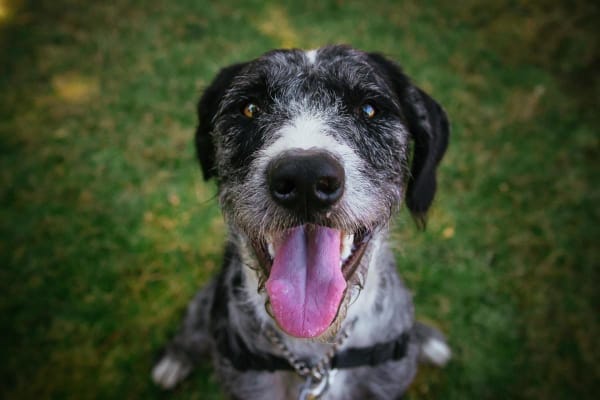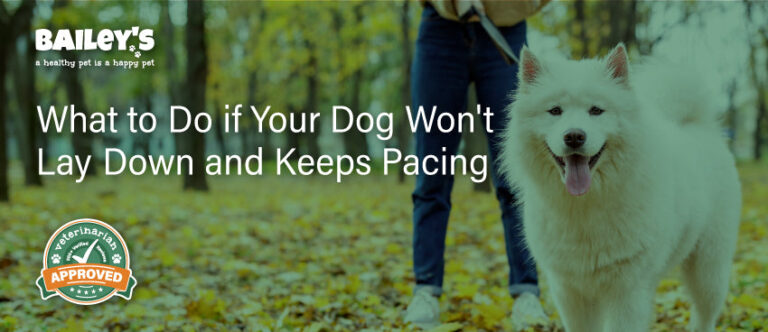If your dog is pacing and won’t lie down, it could be a sign of anxiety, discomfort, or pain. It’s essential to observe your dog’s behavior for any other unusual symptoms and consider seeking veterinary advice if the pacing continues.
Many factors can contribute to a dog’s restlessness, such as physical discomfort, separation anxiety, or aging-related issues. Understanding the root cause is crucial in addressing your dog’s restlessness and ensuring their well-being. We will explore the common reasons why dogs pace and won’t lie down, as well as provide tips on how to help your furry friend find comfort and relaxation.
By identifying the underlying cause, you can take steps to support your dog and provide them with the necessary care and attention.
My Dog Is Pacing And Won’t Lie Down: Understanding Canine Restlessness
Is your dog constantly pacing and refusing to lie down? Canine restlessness can be attributed to various factors, including breed and age differences. Different breeds and age groups exhibit varying behaviors, impacting their restlessness levels. Furthermore, changes in lifestyle and routine can contribute to a dog’s restlessness. Understanding these aspects can help you identify the underlying reasons for your dog’s behavior and take appropriate measures to address it.
Identifying Amidst Normal Behavior
Certainly! Here’s the HTML content for the blog post:“`htmlMy Dog is Pacing And Won’t Lie down
- Recognizing unusual pacing patterns
- Understanding dogs’ body language
- Signs of pain or discomfort in canine actions
Common Reasons For Canine Anxiety
There are several reasons why your dog might be pacing and refusing to lie down. Environmental triggers such as loud noises, thunderstorms, or changes in routine can cause stress and anxiety in canines. Health issues such as pain, discomfort, or underlying medical conditions may also lead to restlessness. Additionally, dietary imbalances or food intolerances can affect your dog’s behavior and contribute to their restlessness.

Credit: toegrips.com
Approaching Restlessness In Dogs
If your dog is pacing and refusing to lie down, it could be a sign of restlessness or anxiety. It’s important to seek timely veterinary consultation to rule out any underlying health issues and get appropriate advice. Regular exercise and mental stimulation can help in relieving excess energy and reducing restlessness in dogs. Engaging in interactive play and providing toys can keep them mentally occupied and physically tired. Additionally, practicing calming techniques such as massage, aromatherapy, or using pressure wraps can help soothe anxious canines.Creating a comfortable and safe environment for your dog is also crucial to reduce stress and encourage relaxation. By addressing the restlessness and anxiety in your dog, you can help them lead a more balanced and contented life.
Addressing Potential Health Concerns
My dog is pacing and won’t lie down can be a concerning behavior and may indicate underlying health issues. Recognizing symptoms of serious health issues is crucial for pet owners. Warning signs such as restlessness, excessive panting, and inability to get comfortable should prompt immediate attention.
If your dog is displaying these symptoms, it is important to seek immediate veterinary care. A visit to the vet can help rule out any serious health issues and provide necessary treatment. Being proactive in addressing potential health concerns can ensure the well-being of your beloved pet.
Modifying Home Environment
To help a pacing dog find comfort, it’s important to establish a routine and safe spaces within the home environment. Dogs thrive on routine structure, providing them with a sense of predictability and security. By creating a consistent schedule for feeding, walks, and playtime, you can help alleviate your dog’s anxiety and restlessness. Additionally, offering safe spaces and comfort items such as a cozy bed or blanket can provide a sense of security and relaxation for your dog. These simple modifications to the home environment can make a significant difference in addressing your dog’s pacing behavior and promoting a more calm and restful atmosphere.
Behavioral And Training Interventions
Positive reinforcements such as treats, praise, and toys can be effective in redirecting excessive pacing behavior in dogs. By rewarding the dog’s calm and relaxed behavior, they can learn to associate this state with pleasant experiences and be less inclined to pace. Implementing training methods such as mental stimulation, physical exercise, and structured routines can also help reduce pacing behavior. Professional behaviorists play a vital role in providing specialized guidance tailored to the individual needs of the dog and its owner. Their expertise can facilitate the development of personalized strategies to address the underlying causes of pacing and implement effective interventions to modify this behavior.
Holistic And Supportive Care Options
Natural remedies and their safety: When looking for ways to help a pacing dog, natural remedies can be beneficial. Holistic options like aromatherapy, herbal medicine, and massage therapy can be safe and effective in promoting relaxation and alleviating anxiety.
Supplements that promote calmness in dogs: Incorporating supplements such as chamomile, valerian root, and CBD can help soothe a restless dog. These calming aids are known for their relaxing properties and can contribute to your dog’s overall well-being.
Integrating physical therapy for well-being: Physical therapy techniques such as acupuncture, acupressure, and hydrotherapy can provide pain relief and improve your dog’s mobility. Gentle exercises and stretching can also help release tension and promote relaxation in pacing dogs.
Frequently Asked Questions On My Dog Is Pacing And Won’t Lie Down
Why Is My Dog Pacing And Not Lying Down?
Dogs may pace and not lie down due to anxiety, discomfort, or restlessness. Observe their behavior and consult a vet if the issue persists.
What Are The Common Causes Of A Dog Pacing?
Common causes of dog pacing include pain, anxiety, restlessness, or a need for attention. Understanding the underlying cause is important for addressing the issue effectively.
How Can I Help My Dog Stop Pacing And Rest?
Create a comfortable, calming environment for your dog, provide mental and physical stimulation, and consider consulting a professional trainer or behaviorist for guidance.
When Should I Be Concerned About My Dog’s Pacing Behavior?
If your dog’s pacing behavior is excessive, persistent, or accompanied by other concerning symptoms, it’s best to seek guidance from a veterinarian to rule out any underlying health issues.
Conclusion
If your dog is pacing and won’t lie down, it could be a sign of anxiety or pain. It’s important to observe their behavior and consult a veterinarian if necessary. Remember to create a calm and comfortable environment for your furry friend.
Understanding their needs is the key to their well-being.



